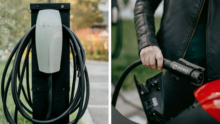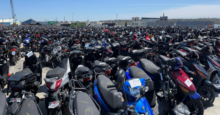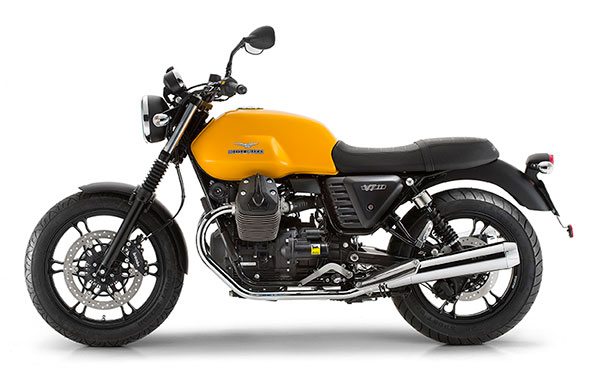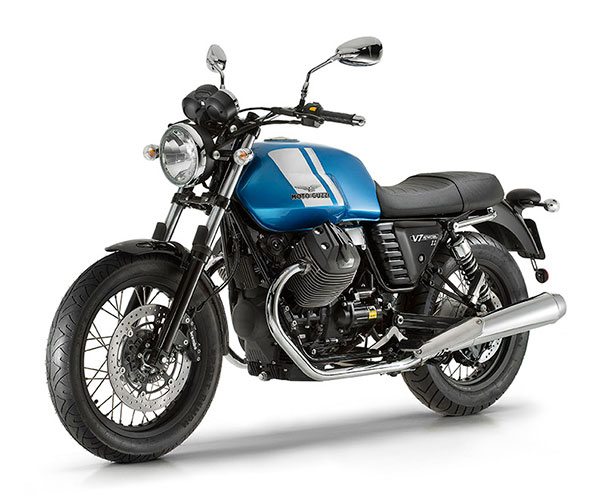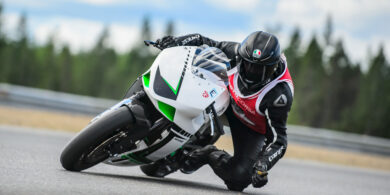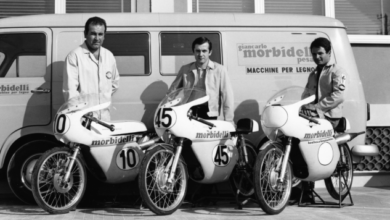Moto Guzzi unveils all-new 2015 V7 II
News release
Improving a Moto Guzzi is never easy. It takes courage, passion and skill to live up to the expectations and reputation of a legendary brand that is beloved the world over for its coveted motorcycles.
The best recent example of this magical combination is the California 1400, a final exam passed with flying colours by the market critics. Now Moto Guzzi relaunches, improving on the other pillar in its product range: the V7. On the best selling Moto Guzzi of 2008 every possible useful element to enhance the sensation of quality, even tactile, has been finely fashioned. The most radical change was to the engine and the chassis where every possible path was explored to increase the level of safety, ergonomics and comfort – in short, the pleasure of riding.
The result achieved represents enough of an evolution to warrant a new name: V7 II. The addition of the Roman numeral historically identifies the most successful and longest running products to come out of Mandello del Lario, such as the V50, Le Mans, 1000 SP, California and now also the V7 in its well known and popular versions: Stone, Special, Racer.
AN EXTRA GEAR
It’s not just an expression; the V7 truly has an extra gear. One look at the gearbox is enough, now completely redesigned in order to house forced lubrication with an oil pump.
The new six gear spacing allowed the first and last two ratios to be reduced, decreasing the drop in rpm between one gear and the next. The primary drive ratio has also been changed, going from 16:21 to 18:23. Along with the gearbox the clutch was also improved, with modifications to the lever, the linkage and the cable in order to achieve a softer action and a more even release.
TOTAL SAFETY.
Moto Guzzi has always had a keen eye toward safety aspects, even as early as the days of the famous combined “integral” braking system. Today Moto Guzzi continues to develop solutions to increase active safety features for the rider and on the new V7 II the ABS braking system and MGCT (Moto Guzzi Controllo Trazione) system have been introduced. The former is a Continental two-channel unit, whereas the latter is a system passed down from the California 1400, simplified in operation, which adapts to the vehicle speed, springing into action based on the difference in speed between the front and rear wheel.
Among other things, the system allows the tyre contact surface with the ground to be recalibrated, thereby compensating for any wear or the use of units that have a profile different than the original standard equipment. Two indicator lights on the instrument cluster signal activation of the ABS and MGTC action.
THE FIRST IMPRESSION IS THE ONE THAT COUNTS.
Looking at the V7 II for the first time, the trained eye of an enthusiast may sense an initial significant difference: the bike appears to be longer and more front-loaded. This is not an optical illusion: the engine has been tilted 4° toward the front axle and lowered 10 mm compared to the previous model.
This has created three more centimetres of knee room which, along with the new 25 mm lower footpegs, provide a comfortable position even for taller than average riders.
Besides comfort, the Moto Guzzi V7 II is a whole other bike in terms of riding pleasure. All you have to do is squeeze the clutch and engage the gear to appreciate a soft and quiet action which was unheard of on the previous five speed gearbox.
Once you are in the saddle, lowered to 790 mm, you’ll discover how the new saddle-handlebar-footpegs triangulation transmits the pleasant sensation of being in the bike and not on top of it like with the previous version. The new riding position allows you to fully enjoy the changes made to the chassis which, thanks to the new lower and farther forward position of the engine, have made it more communicative and efficient in demanding riding.
The rear axle has also been restabilised, increasing suspension negative travel by lowering the cardan final drive output 50 mm. This now allows greater tyre grip during load transfer, both in braking and direction changes.
Sure, the V7 II is not a bike designed to break track records, but even in that situation it is faster now than the previous version and then its direct competitors.
V7 II STONE:
Eclectic and essential, the V7 II Stone now has new “Rough” colours: black, red, grey and yellow.
They are all satin finishes and inspired by typical ‘70s colour schemes that enhance the contrast of the new frame, built with more aesthetic welding where brilliant paintwork has been applied to enhance the ingenious architecture. The rear light cluster is new, done in black like the new, more ergonomic clutch and brake levers.
The technical characteristic that differentiates the V7 Stone from her big sisters is the lightweight alloy wheel rims, a unique modern concept on a decidedly vintage design.
V7 II SPECIAL:
Of the V7 versions this is the one that most approaches the original spirit of its ancestor, beginning from its graphics, christened “Essetre” (S3) and inspired by the famous 1975 V750 S3. Following this graphic concept, the V7 II now has three glossy colour bases: classic black with orange stripes to faithfully revisit the colours of its famous ancestor and two brand new schemes on metallic red and light blue with a silver stripe.
As with the Stone, the Special also has a new frame that stands out, besides for the different engine and shock absorber mounting distances, for an improved finish in terms of welding and paintwork, as well as for the redesigned black brake and clutch levers and the new rear light cluster. Unlike the Stone and the Racer, the V7 Special has a fork stanchion protector instead of the dust boots that are fitted on the other models in the range.
V7 II RACER
Manufactured in limited edition as the celebratory plate located on the upper steering yoke indicates, the V7 II Racer confirms the previous model’s equipment and features when the total-black look was introduced on the side panels, mirrors, silencer brackets and footpeg guards in contrast with the bright 22 litre chromium fuel tank.
Other premium components include the aft-mounted footpegs machined from solid billets, the lightened steering stem and the steering yoke guard consisting of a double chromed ring, which is so exquisitely crafted that it looks like an ornamental feature. Particularly satisfying, not only from an aesthetic point of view but also in terms of dynamic performance, is the presence of a pair of WMY01 Bitubo shock absorbers with adjustable spring preload, in extension and compression, thanks to a 12 click adjusting knob.
This is a bike that was born to be ridden strictly one-up, in black leathers, a skullcap helmet and leather stud palm gloves.


